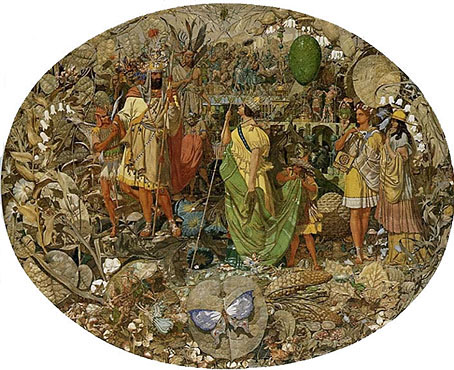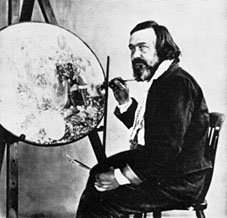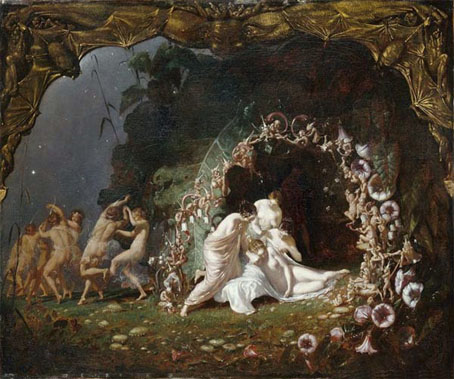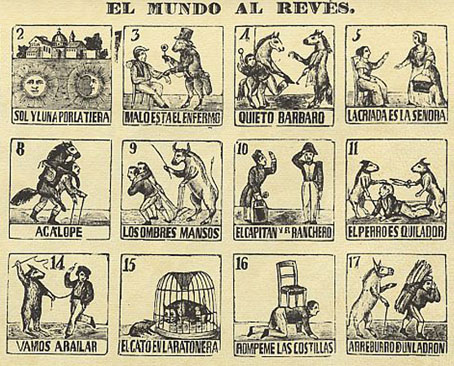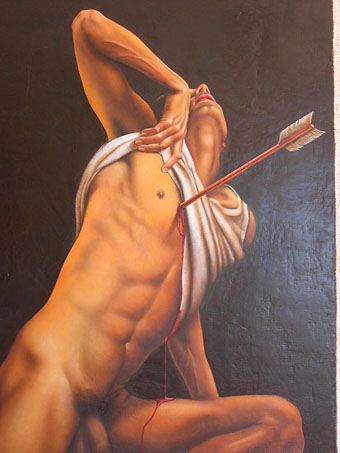Giant of a painting, but is it by Goya or his assistant?
| That question again.
Category: {art}
Art
Aubrey by John Selwyn Gilbert
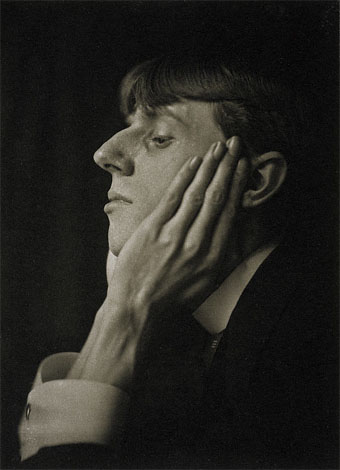
Aubrey Beardsley photographed by Frederick Evans (1894).
I’ve been going through the Coulthart VHS library recently, transferring to DVD recordings which can’t be purchased or found online. Among these is a drama from the BBC’s Playhouse strand, Aubrey by John Selwyn Gilbert, which was broadcast in 1982. This drama follows the life of artist Aubrey Beardsley from the time of Oscar Wilde’s arrest in April 1895—which event resulted in Beardsley losing his position at The Yellow Book—through the foundation of The Savoy magazine, to his tubercular death in March 1898.
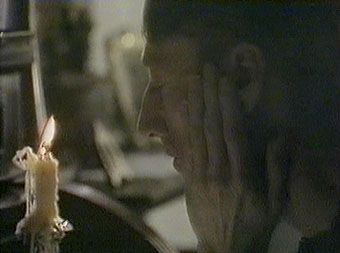
John Dicks as Aubrey.
Playhouse was a BBC 2 equivalent of Play for Today (which usually ran on BBC 1) and Aubrey, like many other dramas of the period, was shot on video in the studio. This was done for convenience as well as being cheaper than shooting on film, since scenes could be filmed using several cameras simultaneously. The drawback is that the image looks very harsh, and historical works such as this often seem unreal and artificial as a result. If you can forgive this deficiency, Aubrey was an excellent production with some great performances, especially Ronald Lacey as Leonard Smithers and Rula Lenska as Aubrey’s sister, Mabel. The details of Beardsley’s life are very accurate, down to his beloved Mantegna prints on the walls, and many of the scenes are arranged to correspond with his drawings, the production design being largely monochrome.
A Midsummer Night’s Dadd
Contradiction: Oberon and Titania (1854–58).
Richard Dadd painting Contradiction, c. 1856.
Of all the paintings based on A Midsummer Night’s Dream my favourite is this one by Richard Dadd (1817–1886), the artist who famously murdered his father in a fit of psychosis and spent the rest of his days as an inhabitant of Bethlem Royal Hospital in London. Dadd painted a number of fairy pictures while incarcerated, giving a popular Victorian genre a taste of his own unique vision. The most well-known of these is The Fairy-Feller’s Master-stroke (1855–64), an unfinished work rendered in minute detail. Contradiction is a more coherent composition and even more finely-detailed, so much so that any web reproduction is bound to be a disappointment. I’d post a larger view but the copy I have in Patricia Allderidge’s 1974 monograph is spread over two pages. She says of it there:
Painted in Bethlem for Dr W Charles Hood, physician superintendent of Bethlem Hospital. Some of the hordes of tiny figures swarming through the foliage are nearly invisible to the naked eye. At the bottom they are mainly soldiers with shields and winged fairies in voluminous robes; at the top, among the weird but exquisite still life and architectural contrivances, are a group of revellers with the body of a deer and various other individuals, all highly fantastic. The details are painted with almost incredible precision, epitomized by the perfectly formed features of the smallest fairies and the dewdrops lying thickly on every surface and hanging from every leaf. Although this is in most ways utterly different from the early fairy paintings, a number of features are developed from Titania Sleeping (below), notably some of the plants, and the overall structure of the composition. A striking contrast is between the dainty moon-born Titania of the first work and the hulking Amazon who here tramples elves underfoot.
Titania Sleeping (1841).
Titania Sleeping resides now in the Louvre. I read some years ago that Andrew Lloyd-Webber, a big collector of Victorian art, owned Contradiction but can’t say whether this is still the case.
Elsewhere on { feuilleton }
• The fantastic art archive
Previously on { feuilleton }
• A Madmen’s Museum
• The art of Franz Xaver Messerschmidt, 1736–1783
The world of dreams
El mundo al revés, a piece of folk surrealism from 19th century Spain. The sun and moon live under the earth, animals torment humans and fish fly through the air.
The art of Joan Sasgar
Sebastian (no date).
There’s more about this Spanish artist at Bajo el Signo de Libra (text in Spanish). Also some biographical details here.
Elsewhere on { feuilleton }
• The gay artists archive
Previously on { feuilleton }
• Saint Sebastian in NYC
• Guido Reni’s Saint Sebastian
• The art of Takato Yamamoto
• Fred Holland Day

